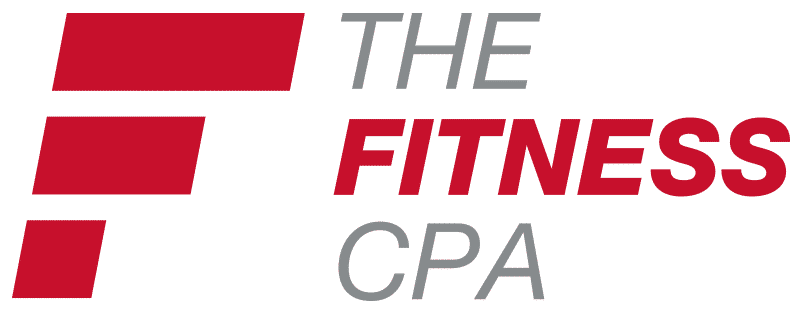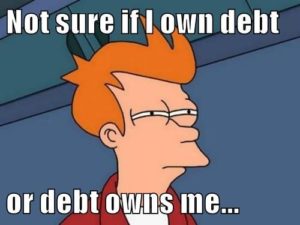We recently made a guest appearance over on a popular fitness podcast, The Fitness Founders Podcast. If you haven’t heard of it yet, it’s a weekly podcast put on by the guys at Glofox to discuss all things fitness, entrepreneurship & business with inspirational* fitness industry leaders. (*Their words, not mine.)
You can check out their podcast series here & the full podcast interview with The Fitness CPA, here.
I thought many of you would find the questions and answers useful so I’ve summarized the five best questions and recommendations in this post.
You can skip ahead to a particular question here:
· What should fitness owners be thinking about financially right now?
· What are successful gyms doing differently than others?
· What are some common financial mistakes gym owners are making?
· What options are out there for government loan assistance?
· How do you decide to take on more debt?
Let’s dive in.
What should fitness owners be thinking about financially right now?
I’ve answered this before in various ways through blogs & emails, but the topic fitness business owners should focus on now is cash flow. How much cash is coming in… and how much cash is going out?
A lot of business owners out there are understandably concerned about the current economic climate and their individual financial situation. But few gym owners have yet to nail down just what their new financial situation looks like. What new revenue is still coming in? Can some expenses be reduced or eliminated? When exactly will the cash in my bank account run out?
Rather than hope and pray things might work out, it’s important to step back and work with an expert accountant (preferably one that understands what your industry is going through) to model out what the financial situation looks like going forward for your individual business.
Some might call this a budget – but don’t let that put you off. It’s really about asking yourself,
“What am I bringing in vs. what are my current expenses?” …. and writing it out on paper.
When going through your expenses, we recommend starting with a baseline of zero. Wipe the slate clean so that you start with zero expenses. One by one, add back in the essential ones, such as rent & electricity, and figure out if you end up cash flow positive or negative against revenue.
If cash flow is negative, as a lot companies are right now, it’s important to work out how fast you will go through your current cash reserves. This is called your burn rate. If your cash flow is negative $5,000 / month and you have $25,000 left in the bank account, you know you have enough cash to last about 5 more months – give or take. If you have other lines of credit available, you may be able to survive a few months longer.
I can’t tell you how much better you’ll sleep at night just having done the work to know where the business stands. I encourage you to work out your cash flow figures and gain clarity into your current financial situation. Do you need to raise funding or are you going to be okay? This transparency will help you take action.
There are gyms that are surviving better than others. What are they doing differently?
This is a question that comes up quite a lot. Why does one franchisee do better than another? Why does one gym down the road bring in twice the revenue every month?
I hate to be the bearer of bad news, but we can’t usually blame this on the location, demographics or branding. More times than not, it’s the owner.
The individual owner of each fitness studio has the ability to make the club work, and we’re seeing examples of this now more than ever. Club owners who were thriving before COVID-19 are generally adapting and changing their business model to find success in the current climate. Gyms who were struggling pre-COVID are struggling even more now. The common denominator is almost always the fitness owner. It really comes down to the founder of the business and how well they’re running it.
I am not saying that this is the case in every scenario or it’s always completely the owner’s fault – it’s not. The fitness industry is hard and there is a lot of saturation in the market. But behind every successful club, there is usually an owner who is doing everything they can to make it work. Whether that’s reaching out to work with coaches, gaining advice from franchisors, or changing up the business model to adapt in tough times – it takes grinding & perseverance to make this business work.
If your fitness studio is struggling, along with thousands of others at the moment, don’t be discouraged.
Now is the time to say, “I’m committed to making this work.” Alternatively, maybe it’s time to say, “this business isn’t for me, let’s look for a smart exit strategy.”
Either way, let COVID-19 put a fire under you to make a change.
What are some common financial mistakes fitness businesses are making right now?
The first one is cash flow, again. You have to figure out what your income and expenses are. Are your books up-to-date? How are you managing loan payments? Is your landlord working with you? These are all questions that will go into your cash flow numbers and help guide you to take action on where to go next.
Another big common mistake? Spending your valuable time reading articles, attending webinars and not taking the subject matter expert’s advice. It’s one thing to listen to a two hour seminar and think to yourself, “those are really good ideas!” and it’s another thing to put the ideas into action.
After reading our first Q&A above, do you have plans to actually change your budget? Are you going to eliminate unnecessary expenses? Are you going to track your cash flow ongoing?
Not taking action will be your number one mistake. If you need help figuring out your current numbers or if your books are a complete mess, reach out to us. We can help push you in the right direction.
What options are out there for government loans and assistance?
Everyone has their eye on free government programs and I’ve spoken a lot about them on my blog and YouTube channel these past few months. But it would be remiss of me not to mention that there are a lot of other places to get the capital needed to carry your business through this difficult time.
A few options to increase cash flow:
- · You could pay the minimum payment on your credit card. This is not recommended for interest rates reasons but it is an option.
- · You can use a personal line of credit or find a local bank to get a business loan through.
- · You can borrow from your retirement fund. While this is typically never recommended, there is tax flexibility with borrowing at the moment. I recommend reaching out to me here first if you think you need to take this option.
- · There are additional options through the government from the government programs from the recent CARES Act.
As for the Economic Injury Disaster Loan (EIDL) & Paycheck Protection Program (PPP) government programs, they were rolled out very quickly and aren’t perfect. There are a lot of ‘gotchas’ involved in both programs.
The EIDL program is run by the SBA and you can only apply through www.sba.org. It is essentially a low interest rate loan program that’s often referred to as “cheap money”. While program registrations have been overwhelmed for close to 12 weeks now, applications have reopened again to business owners across the nation.
If you have previously applied for the EIDL program and have been denied – we recommend appealing the decision. Write down in detail how your business has had economic harm due to COVID-19 and that you would like to receive this loan. Again, feel free to contact The Fitness CPA team if you need help with this step.
For the Paycheck Protection Program, as of this post, all funds have not been depleted yet, either. As of June 14th we read $130 Billion in funds were still available. You can apply for this loan through a local lender or at several online financial services companies like Lendio and Kabbage. For more information, see our previous post here.
In a similar vein to our previous Q&A, it is your determination that’s going to help you succeed in this situation. Business owners who follow up and follow through will gain funding over those who do not. It’s as simple as that.
As an entrepreneur, how many times have you been told ‘No!’ until now? You’ve jumped over hurdles and barriers time and time again to make your business work. Use this as one more hurdle to overcome. Are you going to clear this hurdle too? Keep the momentum going and take advantage of these programs and make your business successful as a whole.
How do business owners decide if it’s worth taking on more debt? How do you make that call?
This is a question in front of a lot of business owners right now:
“Do I double down and try to make this work? Or close my business now?”
First things first, go back and do the cash flow projections. It’s impossible to answer this question without it.
We want to make sure that revenues are maintained where possible and that there’s a light at the end of the tunnel. If you’ve done your modeling of cash flow projection and realized you’re losing $20,000 / month, without an end or solution in sight, you’re going to want to heavily weigh the consequences of taking out more debt. If the cash requirement is too large to push through, the road is too long, and you’ve already been beat up… it may not make sense to take on more.
Alternatively, if your business still has money coming in and you have a plan to make it work, you may just need a small cash infusion to get through to the other side. As an example, if you need $30,000 to pay rent and operating costs until your open date of July and you have 300+ members waiting to start back up, it’s probably a good debt to take on.
However, before any business owner goes out and borrows, it’s important to reconsider the future business model. If you own a big box gym based upon volume or a botique fitness studio that normally packs group classes with 40-50 people, chances are you won’t get those kinds of numbers in the immediate aftermath of COVID-19. Some of your members will be naturally hesitant to work out in large groups. Social distancing measures are going to be expected in most establishments. You may need to transition towards small group training, which will lead to price adjustments & wading through unfamiliar changes with members & employees.
Business model changes are not always a bad thing. While prices may go up, the value will go up too. For example, with small group training, members will gain more accountability and personal support. Throwing in text message campaigns to check in more regularly with clients might be beneficial to smaller groups.
Through all of the changes, it’s your job as an owner to continue delivering value to your members.
There you have it – those are the top 5 questions we covered on the most recent podcast with Glofox.
You can listen to the full podcast here. We discuss things like rent & employees that we didn’t cover here.
If you have a question we didn’t answer, you can submit your own question through our Get in Touch page here. One of our team members will get back to you in 24-48 hours to help in whatever way we can.
In the meantime, you may find our COVID-19 guide helpful: How to Survive and Thrive Post COVID-19 As a Fitness Business Owner. You can download it free here.
Until next time!
- How To Build & Expand Your Fitness Network - June 30, 2024
- Hidden costs and risks of mixing business and personal expenses - June 16, 2024
- Employee Retention Credit 101: A Complete ERC Guide for Tennis Clubs & Racquetball Clubs - March 11, 2024


